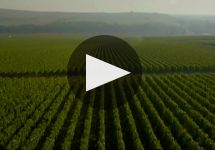Billecart-Salmon Le Rose
-
Wilfred
Wong -
Jeb
Dunnuck -
James
Suckling -
Robert
Parker -
Wine
Spectator - Decanter
- Vinous
-
Wine
Enthusiast
Top 100 of 2024
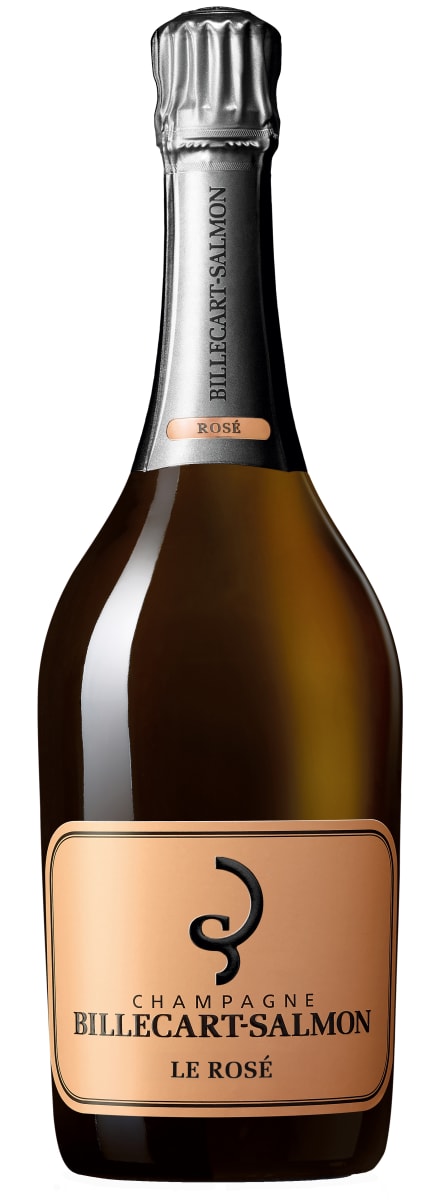







Product Details
Your Rating
Somm Note
Winemaker Notes
The Brut Rosé is a fresh and elegant Rosé Champagne, a blend of Chardonnay, Pinot Meunier, and Pinot Noir vinified as red wine. Radiant color with graceful effervescence, a persistent mousse, and fine bubbles rising slowly in the glass. Subtle and fine aromas leading to an expressive red berry flavor with citrus zest. Creamy and smooth on the palate, evolving to strawberries notes and a raspberry finish. Light, balanced, and precise.
The best pairing for any happy occasion! Pairs greatly with fine charcuterie, sushi, or grilled salmon.
Blend: 45% Chardonnay, 35% Pinot Noir, 20% Pinot Meunier
*The label for Billecart-Salmon Rose is in the process of changing. You may receive either of these two labels featured above. Specific labels cannot be requested.
Professional Ratings
-
Wilfred Wong of Wine.com
COMMENTARY: The Champagne Billecart-Salmon Brut Rosé is full of life and zest on the palate. TASTING NOTES: This wine delivers aromas and flavors of wild strawberries and tart citrus peel. Pair it with a Chinese chicken salad with toasted sesame seeds and a sprinkle of chili oil. (Tasted: May 11, 2023, San Francisco, CA)
-
Jeb Dunnuck
The NV Champagne Brut Rose is an attractive pale salmon hue, with a fresh perfume of wild strawberry, ripe peach, white and red flowers, a hint of tropical fruit, and grapefruit. The palate is rounded, with fruit up front and through the mid-palate, and it has a silky and fresh lift. There is a wonderful ease and drinkability to this wine, which delivers balance and finesse.
-
James Suckling
A succulent, delicious and precise brut rosé, made of chardonnay, pinot meunier and pinot noir. It has notes of wild currants, peach skin and mild spices. It’s medium-bodied and vivid with fine bubbles and plenty of succulence. Sour cherries and redcurrants on the palate. Fresh acidity and a comforting, fruity character to the delicious finish.
-
Robert Parker's Wine Advocate
Aromas of rose, peony, red berries and guava preface the NV Brut Rosé, a medium to full-bodied, elegant and vinous Champagne rosé that concludes with a long, ethereal finish enhanced by menthol notes. A blend of 45% Chardonnay, 35% Pinot Noir and 20% Pinot Meunier, it's based on the 2014 vintage with 46% vins de réserve from nine different vintages and the addition of 6% as a red wine, vinified and matured in stainless steel. Dosage: 4.7 grams per liter.
-
Wine Spectator
This mouthwatering rosé Champagne shows lacy texture and precise balance, with the well-honed acidity deftly knit to the subtle, chalky minerality and delicate range of nectarine, white cherry, slivered almond and pickled ginger notes.
-
Decanter
Based on the 2020 vintage, Billecart-Salmon's signature rosé appears to be on its finest form of recent years under cellar master Florent Nys, full of fragrant, crunchy redcurrant, red cherry and orange fruit with an alluring hibiscus-like floral lift and subtle green peppercorn spicing. The Meunier wraps the intensity of the vintage base in a little softness that keeps the focus on effortless ease (helped by the selection of delicate Chardonnays and young, fresh reserve wines), all adding up to a rosé of immediacy and charm, sweet-natured without sweetness and fragrant without overt fruitiness.
-
Vinous
The NV Rosé, base 2019, is bright, lifted and refreshing. Crushed red berry fruit, mint, white pepper and chalk are very nicely delineated. There's terrific depth and texture to fill out the soft, curvy contours. The 2019 base Rosé is fabulous. In fact, it is one of the best recent releases I can remember tasting. Dosage is 5.1 grams per liter. Disgorged: 3rd quarter 2022.
-
Wine Enthusiast
A floral aroma and rich citrus and raspberry flavors mark this full-bodied rosé Champagne. Its crispness comes from the taut minerality and lemon acidity at the end.

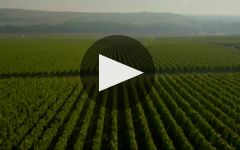
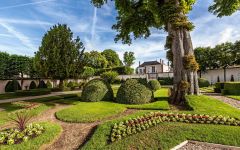
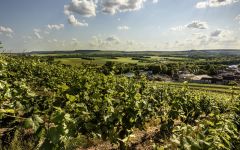

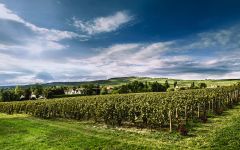
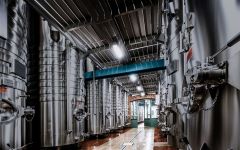

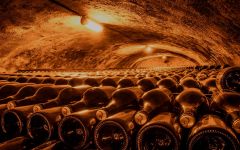
Oldest continuously family-owned House, Billecart-Salmon was founded in 1818 by the marriage of Nicolas Francois Billecart and Elisabeth Salmon. For over two hundred years, the House has developed a renowned expertise in crafting fine, elegant and balanced Champagnes.
Billecart-Salmon was first and foremost the result a union between Nicolas François Billecart and Elisabeth Salmon who, in 1818 and just married, founded their own Champagne House in Mareuil-sur-Aÿ, a small village near Epernay. At their side was Louis Salmon, Elisabeth’s brother and a passionate oenologist who, from the very beginning, dedicated himself to the development of the wines. From then on, their heirs have never stopped aiming for excellence in winemaking. Today led by seventh generation Mathieu Roland-Billecart, each family member has endeavored to pursue the family tradition and stay faithful to the same motto: "give priority to quality, strive for excellence."
Billecart-Salmon rigorously cultivates an estate of 100 hectares, sourcing grapes from an area totaling 300 hectares across 40 crus of the Champagne region.
The majority of the grapes used for vinification come from a radius of 20km around Epernay, where the Grand Crus of Pinot Noir, Pinot Meunier and Chardonnay co-exist, in the vineyards of the Montagne de Reims, the Vallée de la Marne and the Côte des Blancs.
As part of the quest to increase the quality of their champagnes, in the 1950s, the House introduced the technique of cold settling combined with the use of stainless steel tanks for a longer fermentation at a lower temperature. Vinification occurs primarily on small thermoregulated tanks which allows the House to vinify parcels separately, preserving nuances of expression of "terroir". Low temperature fermentation slows down the process, encouraging aromas to delicately develop and allow the purity of the fruit to be fully expressed; absolute signature of the Billecart-Salmon style: finesse, elegance and balance.
Over three years of ageing on lees in the chalk cellars for the non-vintage cuvees and over ten year for the prestige vintage cuvees, the family allows their wines to blossom. Giving the luxury of time to play its role is also behind the grandeur of Billecart-Salmon champagnes.

What are the different types of sparkling rosé wine?
Rosé sparkling wines like Champagne, Prosecco, Cava, and others make a fun and festive alternative to regular bubbles—but don’t snub these as not as important as their clear counterparts. Rosé Champagnes (i.e., those coming from the Champagne region of France) are made in the same basic way as regular Champagne, from the same grapes and the same region. Most other regions where sparkling wine is produced, and where red grape varieties also grow, also make a rosé version.
How is sparkling rosé wine made?
There are two main methods to make rosé sparkling wine. Typically, either white wine is blended with red wine to make a rosé base wine, or only red grapes are used but spend a short period of time on their skins (maceration) to make rosé colored juice before pressing and fermentation. In either case the base wine goes through a second fermentation (the one that makes the bubbles) through any of the various sparkling wine making methods.
What gives rosé Champagne and sparkling wine their color and bubbles?
The bubbles in sparkling wine are formed when the base wine undergoes a secondary fermentation, which traps carbon dioxide inside the bottle or fermentation vessel. During this stage, the yeast cells can absorb some of the wine’s color but for the most part, the pink hue remains.
How do you serve rosé sparkling wine?
Treat rosé sparkling wine as you would treat any Champagne, Prosecco, Cava, and other sparkling wine of comparable quality. For storing in any long-term sense, these should be kept at cellar temperature, about 55F. For serving, cool to about 40F to 50F. As for drinking, the best glasses have a stem and a flute or tulip shape to allow the bead (bubbles) and beautiful rosé hue to show.
How long do rosé Champagne and sparkling wine last?
Most rosé versions of Prosecco, Champagne, Cava or others around the “$20 and under” price point are intended for early consumption. Those made using the traditional method with extended cellar time before release (e.g., Champagne or Crémant) can typically improve with age. If you are unsure, definitely consult a wine professional for guidance.

Associated with luxury, celebration, and romance, the region, Champagne, is home to the world’s most prized sparkling wine. In order to bear the label, ‘Champagne’, a sparkling wine must originate from this northeastern region of France—called Champagne—and adhere to strict quality standards. Made up of the three towns Reims, Épernay, and Aÿ, it was here that the traditional method of sparkling wine production was both invented and perfected, birthing a winemaking technique as well as a flavor profile that is now emulated worldwide.
Well-drained, limestone and chalky soil defines much of the region, which lend a mineral component to its wines. Champagne’s cold, continental climate promotes ample acidity in its grapes but weather differences from year to year can create significant variation between vintages. While vintage Champagnes are produced in exceptional years, non-vintage cuvées are produced annually from a blend of several years in order to produce Champagnes that maintain a consistent house style.
With nearly negligible exceptions, . These can be blended together or bottled as individual varietal Champagnes, depending on the final style of wine desired. Chardonnay, the only white variety, contributes freshness, elegance, lively acidity and notes of citrus, orchard fruit and white flowers. Pinot Noir and its relative Pinot Meunier, provide the backbone to many blends, adding structure, body and supple red fruit flavors. Wines with a large proportion of Pinot Meunier will be ready to drink earlier, while Pinot Noir contributes to longevity. Whether it is white or rosé, most Champagne is made from a blend of red and white grapes—and uniquely, rosé is often produce by blending together red and white wine. A Champagne made exclusively from Chardonnay will be labeled as ‘blanc de blancs,’ while ones comprised of only red grapes are called ‘blanc de noirs.’
